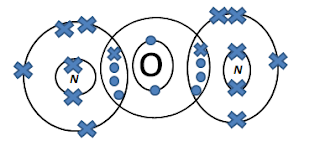
RUST
Rust is a general term for a series of iron oxides. Colloquially, the term is applied to red oxides, formed by the reaction of iron and oxygen in the presence of water or air moisture. Yet, there are also other forms of rust, such as the result of the reaction of iron and chlorine in an environment deprived of oxygen, such as rebar used in underwater concrete pillars, which generates green rust. Several forms of rust are distinguishable visually and by spectroscopy, and form under different circumstances. Rust consists of hydrated iron(III) oxides (Fe2O3·nH2O) and iron(III) oxide-hydroxide (FeO(OH), Fe(OH)3). Given sufficient time, oxygen, and water, any iron mass will eventually convert entirely to rust and disintegrate. Surface rust provides no protection to the underlying iron unlike the formation of patina on copper surfaces.
Rusting is the common term for corrosion of iron and its alloys, such as steel. Many other metals undergo equivalent corrosion, but the resulting oxides are not commonly called rust.
When in contact with human skin, rust poses no harm. However, ingesting too much iron, whether it be via rust, supplements, or otherwise, can lead to unpleasant symptoms including nausea and vomiting. Long-term side effects such as liver damage can be associated with excessive iron intake. In extreme cases, iron overdose can be potentially fatal, particularly in young children. Iron overdose is said to be the leading cause of 'accidental poisoning leading to death' in children under six. One can also get tetanus (a disease which causes muscles to stretch for prolonged periods of time) when cut with rusty iron, making it a dangerous compound.
References:
http://wiki.answers.com/Q/What_are_the_effects_of_Rust_on_the_human_body
http://en.wikipedia.org/wiki/Rust
http://wiki.answers.com/Q/What_are_the_health_consequences_of_ingesting_rust
http://en.wikipedia.org/wiki/Tetanus






